The planets were the biggest objects that go around the Sun. People took many years to find these planets using telescope. New planets and more small objects may available around the sky. Most of the planets will have moons that orbit around them just like the planets around the Sun. In this topic we covered, all planets information in the solar system.
The planets were a large rounded astronomical body that is a star or its remains. The solar system was bounded through the sun and the objects that were orbited in due to gravitational force.
It was formed 4.6 billion years ago due to the collapse of a giant interstellar molecular cloud from the gravitational collapse. The Solar System has at least 8 planets they are Mercury, Venus, Earth, Mars, Jupiter, Saturn, Uranus and Neptune.
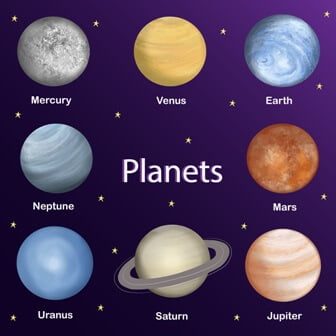
The sun has a vast majority of the systems mass and most of the remaining mass was contained in the planet Jupiter. There are 4 inner system planets they are Mercury, Venus, Earth and Mars. These were terrestrial planets that was primarily with the rock and metal.
There are 4 giant planets in the outer system planets they are substantially larger and more massive than the terrestrials. The 2 largest planets was Jupiter and Saturn. In these planets there are a large amount of two giant gases were being composed they are helium and hydrogen.
The next 2 planets are Uranus and Neptune they are ice giants. They are formed in volatile substances with high melting points. They include water, ammonia, methane, hydrogen and helium.
The all 8 planets have nearly circular orbits that will lie near to the plane of earth’s orbit is called as the ecliptic.
All planets information
- Mercury
- Venus
- Earth
- Mars
- Jupiter
- Saturn
- Uranus
- Neptune
Mercury Planet
Mercury planet is closest and smallest planet in the Solar system. It orbits around the sun will takes 87.97 earth days. It was named as a Roman God Mercurius (Mercury). This planet is known as messenger of gods, god of trade, mediator between gods and humans.
The Venus and Mercury revolve around the sun within the Earth’s orbit as an inferior planet. The apparent distance from the sun was never exceeds 28 degrees as viewed from the earth.
The sun presence to the planet was only seen from the western horizon after the sunset or the eastern horizon before the sunrise that was usually in twilight.
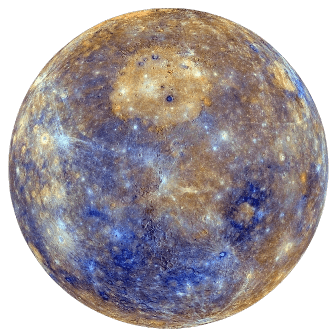
On that time sun appear like a bright star like an object, but it is more difficult to observe. The Mercury rotates in a way that was unique in the Solar System.
It was preferably locked with the sun in 3:2 spin to orbit resonance that relative to the fixed stars. It will rotate on its axis exactly 3 times for every 2 revolutions around the sun.
- The distance from the sun to the Mercury was 58 million km.
- The mercury orbital period of sun was 88 days.
- The surface area of the Mercury was 74.8 million km.
- The mass of the Mercury was 3.285*10^23 kg (0.005 M).
- Mercury planet 58 days 15 hours 30 minutes to revolve around itself.
- The apparent magnitude of Mercury was 0.23.
- The radius of the Mercury was 2,439 million km.
Venus Planet
Venus was the 2nd planet from the Sun. Sometimes it was also called as Earth’s sister or the twin planet. It was large in size and has a similar to the earth according to shape. Venus is the interior planet of the Earth.
In the sky, Venus appears as a morning or evening star from Earth and is the 2nd closest planet to the Sun. Venus looks like a bright natural object when viewed from the Sun and Moon. Venus planet looks like a star to our eyes even during the day.

- The Venus aphelion was 0.728 213 AU (108,939,000 km).
- The Venus perihelion was 0.718 440 AU (107,447,000 km).
- The Venus eccentricity was 0.006772.
- The Venus nearest planet was Sun.
- The Venus angular diameter was 9.7-66.0.
- Venus takes 116 days 18 hours 0 minutes to revolve around itself.
- The Venus distance from Sun was 108.2 million Km.
- The Venus radius was 6,051.8 km.
- The Venus orbital period of sun was 225 days.
- The Venus surface area was 460.2 million Km.
- The Venus mass was 4.867*10^24 kg (0.815 M).
- The Venus density was 5.24 g/cm.
- The Venus has no magnetic field, but some models are indicating that the planet may have supported a global magnetic field until a billion years ago.
Earth Planet
Earth was the 3rd planet from the Sun. Earth is the only celestial body that has all the facilities required for human survival. Scientists are exploring whether or not other planets have the necessary facilities for human life. Currently, humans are trying to live on the moon with the help of scientists.
When viewed from the solar system, the Earth appears to be the largest volume of water. About 71% of the Earth’s surface was made up of the ocean the overlook of Earth’s polar ice, rivers and lakes. The remaining 29% of the Earth’s surface is made up of continents and islands.

The Earth’s surface layer was formed of the several slowly moving tectonic plates that were interacting to produce the mountain ranges, volcanoes and earthquakes. The Earth’s liquid outer core will generate the magnetic field that will shape the magnetosphere of the Earth that was deflecting destructive solar winds.
- The Earth’s aphelion was 152 100 000 km.
- The Earth’s perihelion was 147 095 000 km.
- The Earth’s eccentricity was 0.016 7086.
- The Earth’s mean radius 6 371.0 km (3 958 mi).
- The Earth polar radius was 6356.752 km (3 949.903 mi).
- The Earth equatorial radius was 6 378.137 km (3 963.191 mi).
- Earth planet takes 24 hours to revolve around itself.
- The Earth revolves around itself and takes 365 days to revolve around the Sun.
- The Earth orbital period (sidereal) of sun was 365.256 363 004 days (1.000 017 420 96).
- The Earth average orbital speed of sun was 29.78 km/s (107 200 km/hr).
- The Earth’s satellites were 1 natural satellite: the Moon, 5 quasi-satellites, >4 500 operational artificial satellites, >18 000 tracked space debris.
- The Earth’s surface area was 510 072 000 km (196 940 000 sq miles).
- The Earth’s velocity was 11.186 km/sec (40 270 km/hr; 25 020 mph).
Mars Planet
The Mars was the 4th planet from the Sun and the second smallest planet in the Solar System. It is larger than the mercury planet and in the English language the Mars was named for the Roman god of the war.
Mars is a terrestrial planet with a delicate atmosphere. It consists of a crust composed of elements similar to Earth’s crust. Mars contains mostly iron and nickel.
The Mars has a surface features like impact craters, dunes, valleys and polar ice caps. Mars has two irregular and small shaped moons that are Phobos and Deimos.

- The Mars aphelion was 249 261 000 km.
- The Mars perihelion was 206 650 000 km (128 410 000 mi; 1.3814 AU).
- The Mars semi-major axis was 227 939 366 km (141 634 956 mi; 1.523 680 55 AU).
- The Mars eccentricity was 0.0934.
- The Mars orbital period (sidereal) was 686.980 diameter (1.880 85 yr; 668.5991 sols).
- The Mars orbital period (synodic) was 779.94 days (2.1354 yr).
- The Mars average orbital speed of sun was 687 days.
- The Mars equatorial rotation velocity was 241 m/s.
- Mars takes 1 day 0 hours 37 minutes to revolve around itself.
- The Mars gravity was 3.721 m/s.
- The Mars radius was 3,389.5 km.
- The Mars mass was 6.39*10^23 kg (0.107 M).
- The Mars temperature was below -80 degrees F.
Jupiter Planet
Jupiter is the 5th planet and the largest planet in the Solar System. It has a gas giant planet with mass more than two and a half times bigger than the other planets in the Solar System.
It is slightly less than one 1000th of the mass of Sun. Jupiter is the third brightest natural planet visible in the sky from Earth after the Moon and Venus. Jupiter is a planet that has been observed since ancient times.
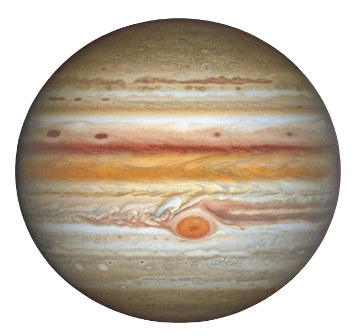
- The Jupiter aphelion was 816.363 Gm (5.4570 AU).
- The Jupiter perihelion was 740.595 Gm (4.9506 AU).
- The Jupiter semi-major axis was 778.479 Gm (5.2038 AU).
- The Jupiter eccentricity was 0.0489.
- The Jupiter orbital period (sidereal) was 11.862 year; 4,332.59 days; 10,476.8 Jovian solar days.
- The Jupiter orbital period (synodic) was 398.88 days.
- The Jupiter average orbital speed of sun was 13.07 km/s (8.12 mi/s).
- The Jupiter mean anomaly was 20.020.
- The Jupiter mean radius was 69,911 km (43,441 mi); 10.973 of Earth’s.
- The Jupiter equatorial radius was 71,492 km (44,423 mi) 11.209 of Earth’s.
- The Jupiter polar radius 66,854 km (41,541 mi); 10.517 of Earth’s.
- The Jupiter flattening was 0.06487.
- The Jupiter scale height was 27 km (17 mi).
- The Jupiter distance from sun 778.5 million Km.
- The Jupiter Radius was 69,911 km.
- The Jupiter average orbital period of sun was 12 years.
- The Jupiter mass was 1.898*10^27 kg (317.8 M).
- The Jupiter surface area was 61.42 billion km2.
- The Jupiter coordinates RA 23h 56m 44s.
- The Jupiter atmosphere was extremely dense. It has the dry atmosphere is composed of the mixture of the hydrogen, helium and much smaller amounts of methane and ammonia.
Saturn Planet
The Saturn was the 6th planet from the Sun and it was the 2nd largest in the Solar System after the Jupiter planet. It was a gas giant with an average radius of about nine and a half times that of Earth.
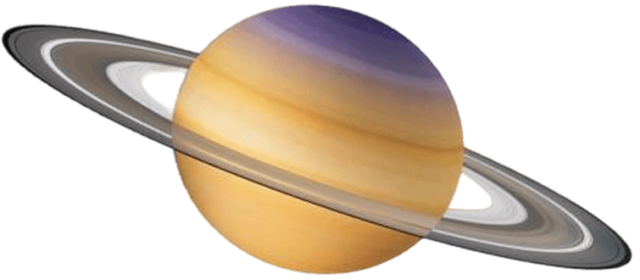
- The Saturn aphelion was 1,514.50 million km (10.1238 AU).
- The Saturn perihelion was 1,352.55 million km (9.012 AU).
- The Saturn semi-major axis 1,433.53 million km (9.5826 AU).
- The Saturn eccentricity was 0.0565.
- The Saturn orbital period (sidereal) was 29.4571 yr; 10,759.22 d; 24,491.07 Saturnian solar days.
- The Saturn Synodic orbital period of sun was 378.09 days.
- The Saturn average orbital speed of sun was 9.68 km/s (6.01 mi/s).
- The Saturn mean anomaly was 317.020.
- The Saturn known satellites 83 with the formal designations of innumerable addition moonlets.
- The Saturn mean radius 58,232 km (36,184 miles/sec).
- The Saturn equatorial radius was 60,268 km (37,499 miles/sec).
- The Saturn age was 4,503 billion years.
- The Saturn orbital period was 29 years.
- The Saturn surface area was 42.billion km2.
- The Saturn temperature was about -285 degrees F.
- The Saturn surface area was 42.7 billion km2.
- The Saturn moons were Titan, Mimas, Enceladus, Dione, Tethya, Lapetus, Hyperion, Epimetheus, Telesto, Phoebe, Daphnis, Rhea, Paaliaq, Erriapus, Albiorix, Narvi, Ijiraq, Mundilfari, Skathi, Tarvos, Siarnaq, Thrymr and many others.
Uranus Planet
Uranus was the seventh planet from the Sun. The name was a reference to the Greek god of the sky. According to Greek mythology the great grandfather of Ares (Mars), grandfather of Zeus (Jupiter) and the father of Cronus (Saturn).
It has the third largest planetary radius and the fourth largest planetary mass in the Solar System. Uranus was similar to Neptune in composition and will have bulk chemical compositions that differ from the larger gas giants Jupiter and Saturn. Scientists were classified that the Uranus and Neptune as a ice giants compared to the other giant planets.

- Uranus distance from sun was 2.871 billion km.
- Uranus orbital period was 84 years.
- Uranus radius was 25,362 km.
- Uranus surface area was 8.083 billion km2.
- Uranus mass was 8.681810^25 kg (14.54 M).
- Uranus length of day was 0 days 17 hours 14 minutes.
- Uranus aphelion was 20.0965 AU (3.006.39 Gm).
- Uranus perihelion was 18.2861 AU (2 735.56 Gm).
- Uranus semi major axis was 18.2861 AU (2 870.972 Gm).
- Uranus eccentricity was 0.047 17.
- Uranus orbital period (sidereal) was 84.0205 yr; 30,688.5 d; 42,718 Uranian solar days.
- Uranus orbital period (synodic) 369.66 days.
- Uranus average orbital speed was 6.80 km/s.
- Uranus mean density was 1.27 g/cm3.
Neptune Planet
Uranus was the 7th planet from the Sun. According to the Greek mythology the great grandfather of Ares (Mars), grandfather of Zeus (Jupiter) and the father of Cronus (Saturn). Uranus has the third largest planetary radius and the fourth largest planetary mass in the Solar System.
Uranus planet was similar to Neptune planet in composition. It will have bulk chemical compositions that differ from the larger gas giants of Jupiter and Saturn. Scientists were classified that the Uranus and Neptune as a ice giants compared to the other giant planets.
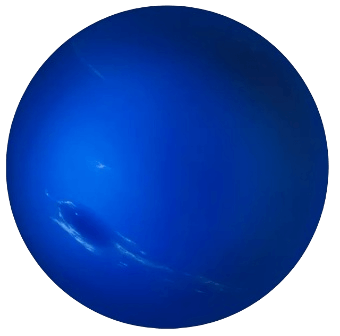
- Neptune orbital period was 165 years.
- Neptune distance from the sun was 4.495 billion km.
- Neptune radius was 24,622 km.
- Neptune surface area was 7.618 billion km2.
- Neptune mass was 1.024*10^26 kg (17.15 M).
- Neptune takes 0 days 16 hours 6 minutes to revolve around itself.
- Neptune temperature was above-373 degrees F.
Pluto Dwarf Planet
In August 2006 the International Astronomical Union (IAU) was dismissed the status of the Pluto as a planet. Pluto was a dominating unrecognizable planet to the Kuiper belt a ring of the bodies that was beyond the orbit of the Neptune. It was the 9th largest and the 10th most massive object. It orbits directly around the Sun.
The other kupier belt objects like Pluto were formed primarily of ice and the rock. They were much smaller than the inner planets. Pluto have only one sixth of its mass and one third of the volume compared to the Earth’s moon. It is in orbit around the Sun, It has sufficient mass to assume that was nearly in round shape.

